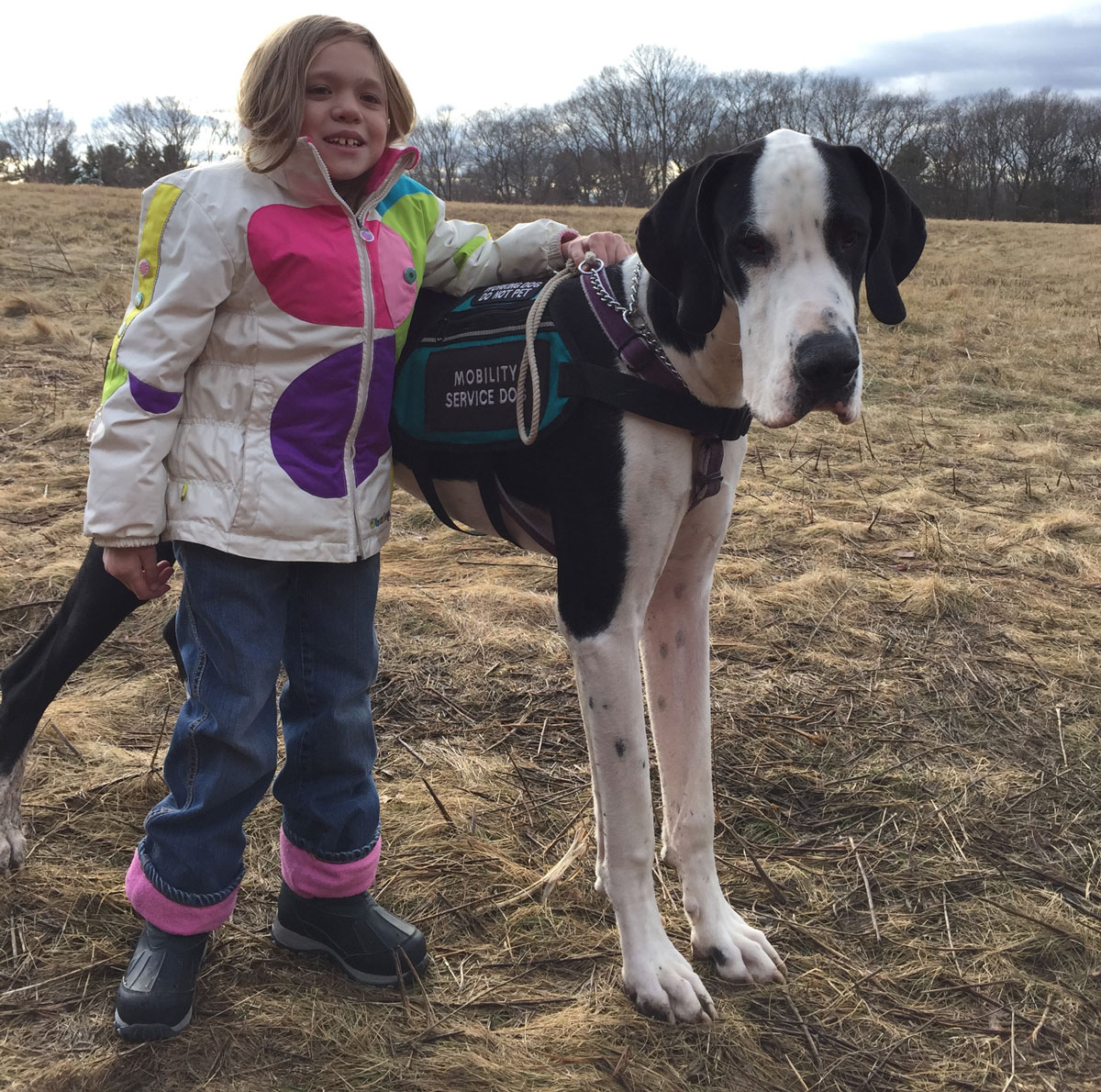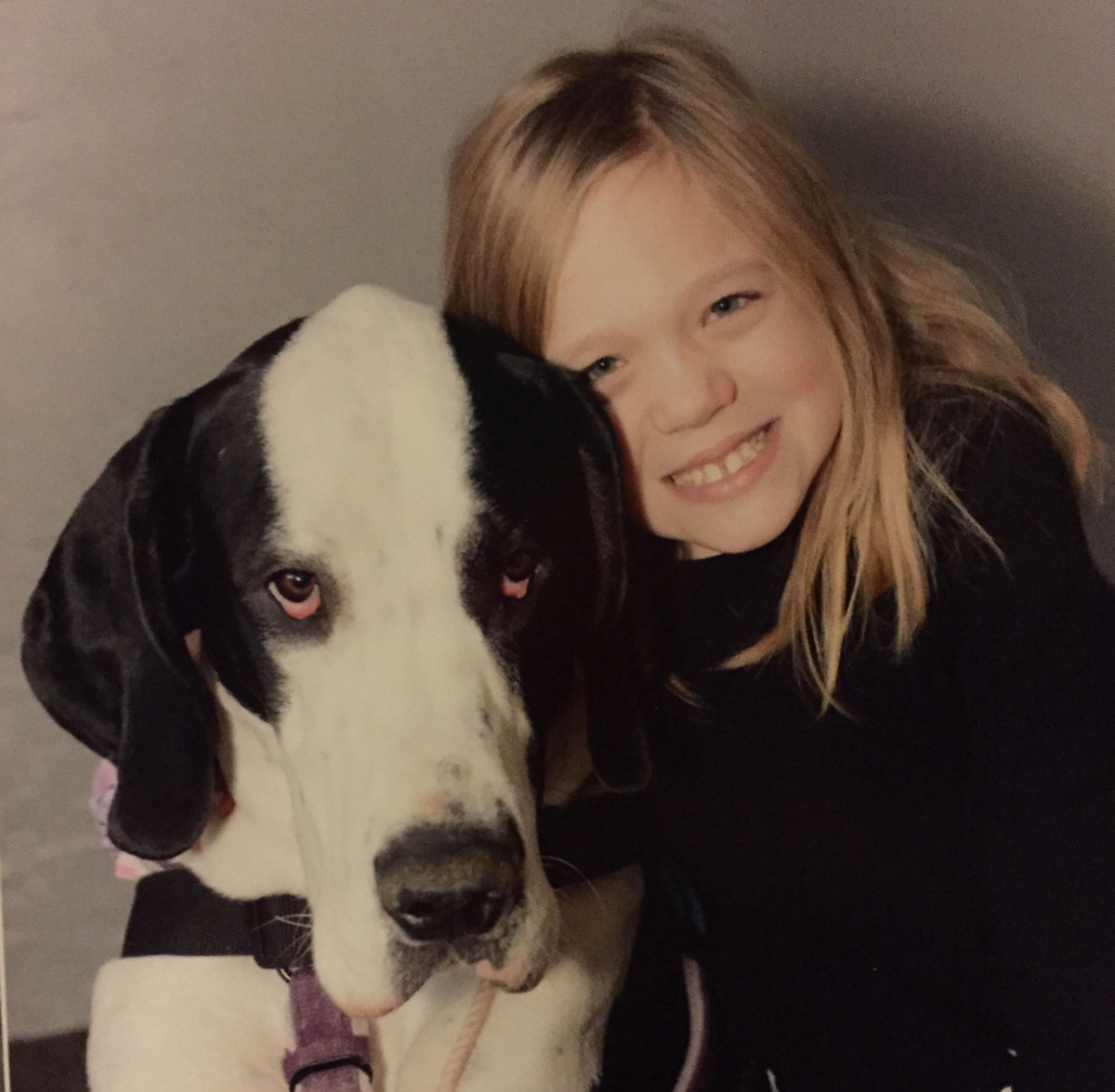Service Dog Helps a Local Fourth Grader Manage Rare Disease

Bella Burton and her service dog, George. / Photo provided to bostonmagazine.com
When 10-year-old Bella Burton first met George, her new service dog, their connection was immediate. Rachel Burton, Bella’s mother, says that when Bella visited the animals at the Service Dog Project in Ipswich, George was the only dog to show any interest in her.
“For some reason, George fell in love with her,” Burton says. “They’re the best of buds, those two. They make a great team.”
As a service animal, George helps Bella tackle the mobility challenges she faces as a complication of Morquio Syndrome, a rare disease that affects just 3,000 people worldwide. The condition is one of many that activists seek to raise awareness of as part of Rare Disease Day, a global event that takes place each year on the last day of February. The NIH defines a rare disease as one that is diagnosed in less than 200,000 people. An estimated 25 million Americans—less than 10 percent of the population—are living with one today.
Bella, a Woburn resident, was diagnosed with her rare disease at the age of two. Morquio Syndrome is a genetic condition in which the body is missing an important enzyme that is needed to break down sugar molecules. A buildup of these molecules can lead to organ damage, abnormal bone development, and dwarfism, according to the NIH. Morquio Syndrome is a degenerative disease, which means it worsens with age. In Bella’s case, it has significantly impaired her ability to keep up with her friends at school. It has also made it difficult for Bella to walk without assistance. That’s where George comes in.
George, a 16-month-old Great Dane, has been Bella’s constant companion since he came to live with the Burton Family in January. He attends classes with the fourth grader at Reeves Elementary School and accompanies her on her weekly visits to Boston Children’s Hospital, where she receives an infusion of enzyme replacement therapy (ERT) every Wednesday. Burton says that George helps Bella walk by acting as a crutch when she leans or holds onto him.
“He basically follows wherever she goes. They sleep together in bed every night,” she says. “He really is very protective and takes good care of her.”
For Burton, having George around to help watch over Bella provides an “extra comfort,” she says. Though Bella has not experienced the negative side effects that sometimes come with ERT, Burton says it’s still too soon to tell whether the treatment is actually working. Bella began the ERT infusions in June 2014 after a slew of operations, including a bi-lateral hip reconstruction and cervical fusion.
“She’s had nine major surgeries and we know she’s not done, but she takes it in stride,” Burton says. “She’s just a happy kid. She takes whatever’s thrown at her and keeps going.”

Bella Burton and her service dog, George. / Photo provided to bostonmagazine.com


